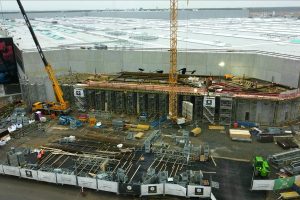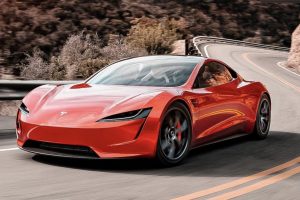- 💸 Elon Musk estimates Tesla’s Nvidia purchases in 2024 will be between $3 billion and $4 billion.
- 📈 Tesla’s Giga Texas south extension will soon house 50,000 Nvidia H100 chips for FSD training.
- 🖥️ Musk discussed the potential for Tesla’s Dojo supercomputers to eventually surpass Nvidia in production volume.
- 🔋 Training compute at Tesla is relatively small, with inference compute being much larger in scale.
- ⚡ Peak power consumption for AI hardware in 100 million Tesla vehicles is estimated to be around 100GW.
- 🎯 Musk considers exceeding Nvidia’s production with Dojo a long shot, but a possible outcome.
- 🗨️ Public discussions and insights about the AI supercomputing needs of Tesla were shared by Musk on X (formerly Twitter).
Tesla continues to be a trailblazer in the realm of electric vehicles and artificial intelligence. With new financial and technological developments, Elon Musk’s latest announcements shed light on the company’s ambitious plans and strategic expenditure. In this post, we’ll dive deep into Musk’s estimates of Tesla’s Nvidia purchases for 2024, the expansion of Giga Texas, the potential of Dojo supercomputers, and what it means for the future of AI in Tesla’s ecosystem.
The Financial Landscape: Tesla’s Nvidia Purchases
Elon Musk estimates that Tesla will spend an astonishing $3 to $4 billion on Nvidia products in 2024. This colossal investment is crucial for purchasing Nvidia’s state-of-the-art hardware to enhance Tesla’s AI supercomputing capabilities.
Why Such an Enormous Investment?
To understand why Tesla is committing such vast resources, we need to consider the company’s focus on Full Self-Driving (FSD) technology and its reliance on high-performance computing. Nvidia’s cutting-edge technology is indispensable for training and refining AI models, which are the backbone of Tesla’s autonomous driving features.
- Nvidia H100 Chips: These chips are pivotal for FSD training, offering unparalleled computational power.
- Scalability and Efficiency: Nvidia’s hardware provides the scalability required to manage Tesla’s sophisticated software algorithms, making sure the vehicles can operate efficiently and safely.
Expansion of Giga Texas: A Hub for AI Training
Tesla’s Giga Texas south extension is nearing completion and is set to house 50,000 Nvidia H100 chips specifically for FSD training. This development underscores the critical role of infrastructure in supporting the company’s AI initiatives.
How Does Giga Texas Enhance Tesla’s Capabilities?
- Centralized Training Facilities: Having a massive array of Nvidia chips in one location allows Tesla to centralize its AI training operations, significantly boosting efficiency.
- Future Readiness: This expansion prepares Tesla for future demands, ensuring that the infrastructure is ready to handle more advanced and intricate AI models.
The Dojo Supercomputer: A Potential Game Changer
Elon Musk discussed the potential for Tesla’s Dojo supercomputers to eventually surpass Nvidia in production volume. The Dojo project represents Tesla’s commitment to developing in-house AI hardware.
What Makes Dojo Special?
- Specialized Training Capabilities: Dojo is being designed specifically for AI training, making it highly specialized and efficient.
- Scalability: Dojo aims to provide massive computational power, potentially relegating the need for external hardware like Nvidia’s in the future.
Is It Feasible?
While Musk is optimistic, he acknowledges that surpassing Nvidia is a long shot. However, even the possibility demonstrates Tesla’s ambition and commitment to innovation.
Training vs. Inference Compute
Elon Musk highlighted that training compute at Tesla is relatively small compared to inference compute needs. This distinction is essential in understanding Tesla’s AI strategy:
Training Compute
- Purpose: Used for developing and refining AI models.
- Requirement: High at initial stages but stabilizes over time.
Inference Compute
- Purpose: Used for real-time decision-making in Tesla vehicles.
- Requirement: Scales linearly with fleet size, making it the dominant use case for Tesla’s compute resources.
Power Consumption Insights
According to Musk, the peak power consumption for AI hardware in 100 million Tesla vehicles is estimated to be around 100GW. This metric provides a glimpse into the future energy requirements for Tesla’s AI operations.
Conclusion
Tesla’s strategic investments and infrastructure developments reflect its unwavering commitment to advancing AI supercomputing and autonomous driving technologies. The potential of Dojo, combined with Nvidia’s cutting-edge hardware, positions Tesla to lead the future of mobility.
The Road Ahead
As Tesla continues to grow and innovate, it will be fascinating to see how these investments pay off. Whether it’s through enhanced FSD capabilities or pioneering new AI technologies, Tesla remains at the forefront of technological advancement.





